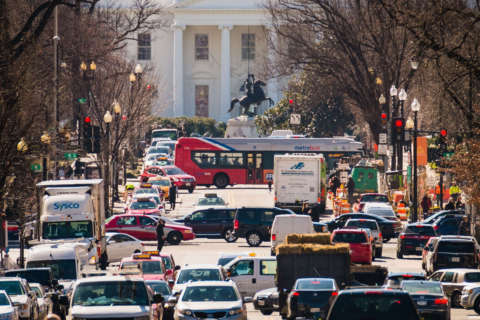What will D.C. do to make sure its growing population has affordable housing? What steps will the city take to address climate change and prepare its residents for ongoing technological changes in the job market?
Those questions and more are addressed in a 160-page report titled “Resilient DC,” which was unveiled this week and includes the District’s plans to meet issues that exist now and also loom in the future. The report focuses on three main issues that pose challenges and opportunities: population growth, climate change and technology.
In terms of population growth, the city has around 700,000 residents now and, in the decades to come, that number is expected to top 1 million. It’ll have an even bigger impact on a transportation system that’s already overstressed and a housing market that many already can’t afford.
“It’s both a challenge and an opportunity,” said Kevin Bush, D.C.’s chief resilience officer. “D.C. is a great place to live, and to raise a family, and thrive, but … we have one of the highest costs of housing in the country. We need to make sure that we’re leveraging that growth.”
The easiest way to do that is by increasing the amount of housing that already exists — Bush said an easy way would be to increase the number of what are called “accessory dwelling units,” such as basement apartments, carriage houses and granny flats — which both boost housing stock and also creates the potential for a new source of income for residents.
Bush said there is room for many more residents to take advantage of this option who so far haven’t. But the report makes clear many approaches are needed to address the problem.
Likewise, climate change is already having an impact on parts of the District, and that impact only figures to grow larger in the coming years.
“We’re experiencing some of the fastest rate of sea level rise along the East Coast,” Bush said. “We’re also starting to see a lot more of the flashy rainstorms that drop a lot of rain all at once and can overwhelm some of our sewer systems. And that’s just the water-related aspects of climate change; there’s heat and other sorts of things we need to prepare for as well.”
Technology also looms large in the report. Bush said even though automation is a bigger threat to other cities compared to D.C., “the jobs that are likely to be automated are held by lower-income individuals.”
He said that means the city has to come up with new ways to educate its population, and prepare people for jobs that won’t be disappearing in the years to come. Some of that could come in the “care” industry (elderly and child care, for instance), as well as jobs in the building sector, since the commercial building boom hasn’t slowed down yet.
But Bush also said focusing more on cyberattacks is also one of the pressing issues facing the city.
“In one four-day period last year, the District identified and responded to … over 300,000 different attempts to access the D.C. network,” Bush said, adding that there’s an increasing vulnerability to cybercrime that takes increasing sophistication to address.
D.C.’s report is part of the 100 Resilient Cities program that’s being driven by The Rockefeller Foundation.
“This is the District’s plan for resilience,” Bush said. “The changes that are outlined in the strategy are changes that we’re experiencing now and will continue to experience.”






